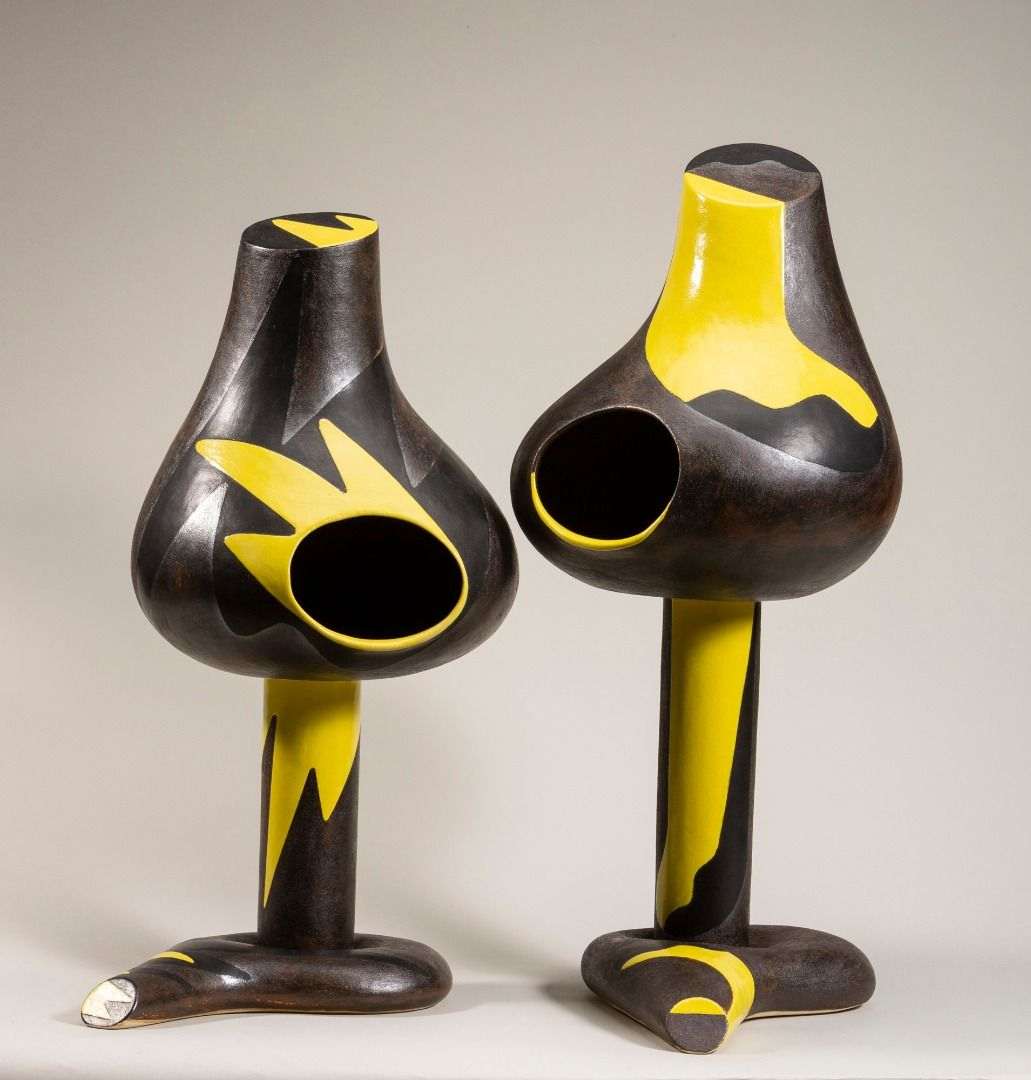Yanagihara Mutsuo (b. 1934) is a prominent Japanese ceramist known for his graphic and bold use of color and form. He began his artistic career at the Kyoto City University of the Arts, receiving a bachelor’s degree in 1958 and a master’s degree in 1960, studying with Kenkichi Tomimoto. Initially, Yanagihara pursued graphic design, but he later switched to ceramics after working with Tomimoto. In the 1950s and 1960s, Tomimoto and Yanagihara were two of many artists challenging accepted ceramic traditions in Kyoto. From 1960 to 1966, Yanagihara was an instructor as his alma mater, Kyoto City University of the Arts. In 1966, Yanagihara received an invitation to guest lecture at Washington State University in Seattle. He split his time in the United States between teaching at the university and participating in exhibitions throughout Washington, Oregon, and California. In the 1970s and 1980s, Yanagihara travelled around the world, working as a professor and instructor at universities in the US, Japan, and Spain. While living in the US, Yanagihara became interested in Pop art and Abstract Expressionism and began to incorporate the vivid colors, explosive line, and high energy of those styles into his organic, ceramic sculptures. By rejecting traditional ornate decoration, Yanagihara hoped to incorporate self-expression and personal identity into his wares.Yanagihara’s Ukishima I and Ukishima II stand apart from most Japanese ceramic sculptures, which either serve as abstractions of traditionally glazed vessels, or remain unglazed to highlight the natural qualities of the clay. Instead, Ukishima I and II (roughly translated as “floating island”) boast glossy glaze and hard-edged decoration. Quite a few artists of Yanagihara’s generation (including his Kyoto City University classmate Morino Hiroaki Taimei) actively pushed against the pervasive “tea ceremony” aesthetics of the generation that preceded them. Look closely, though, and you will see that Ukishima I and II actually possess startling depth and subtle textures that evoke worn leather to contrast with the sculptures’ candy-coated yellow areas. The two sculptures consist of analogous, bulbous forms with hollow interiors and curved openings that invite the viewer to gaze inside. Yanagihara believed that equal attention ought to be given to the interior and the exterior of a sculpture. The hard-edged yellow, black, and brown glazes allow the texture of the clay to remain visible. The glazes are applied in sharp angles and create a stark contrast to the muted brown body of the sculpture. In the 1980s and 1990s, Yanagihara used bright colors and abstract lines to combat conventional ceramic tradition. His interest in expressive and bold lines may have also been inspired by 1990s anime and manga aesthetics. Ukishima I and Ukishima II are currently on display in The Floating Bridge: Postmodern and Contemporary Japanese Ceramics, an exhibition highlighting the under-recognized generation of artists who are now credited with laying the groundwork for today’s contemporary ceramic movement in Japan. –
Tyler Valera, Curatorial Intern
Photo credit: Jamie Young. Sources:1. Jones, Meghen M. “Tomimoto Kenkichi and the Discourse of Modern Japanese Ceramics.” PhD diss., Boston University, 2014. ProQuest 3627966.2. Moore, Christopher. “Feats of Clay.” The Press, September 7, 2005. D3.3. Yanagihara Mutsuo. “Artist CV.”4. Rodríguez Cunchillos, Alejandra. “’Estiu Japó 86’ cerámica japonesa contemporánea. Un intercambio artístico entre España y Japón.” Mirai vol. 3 (August 2019): 189.5. “The Hindu: Japanese clay works on show.” Hindu, The (Madras, India), February 29, 2004. 188.6. “Tsubo Vessel – Yanagihara Mutsuo.” Brooklyn Museum. Accessed November 20, 2020. https://www.brooklynmuseum.org/opencollection/obje…7. “Yanagihara Mutsuo.” Gallery Asuka. Accessed November 6, 2020. https://gallery-asuka.jp/english/artists/yanagihar…


